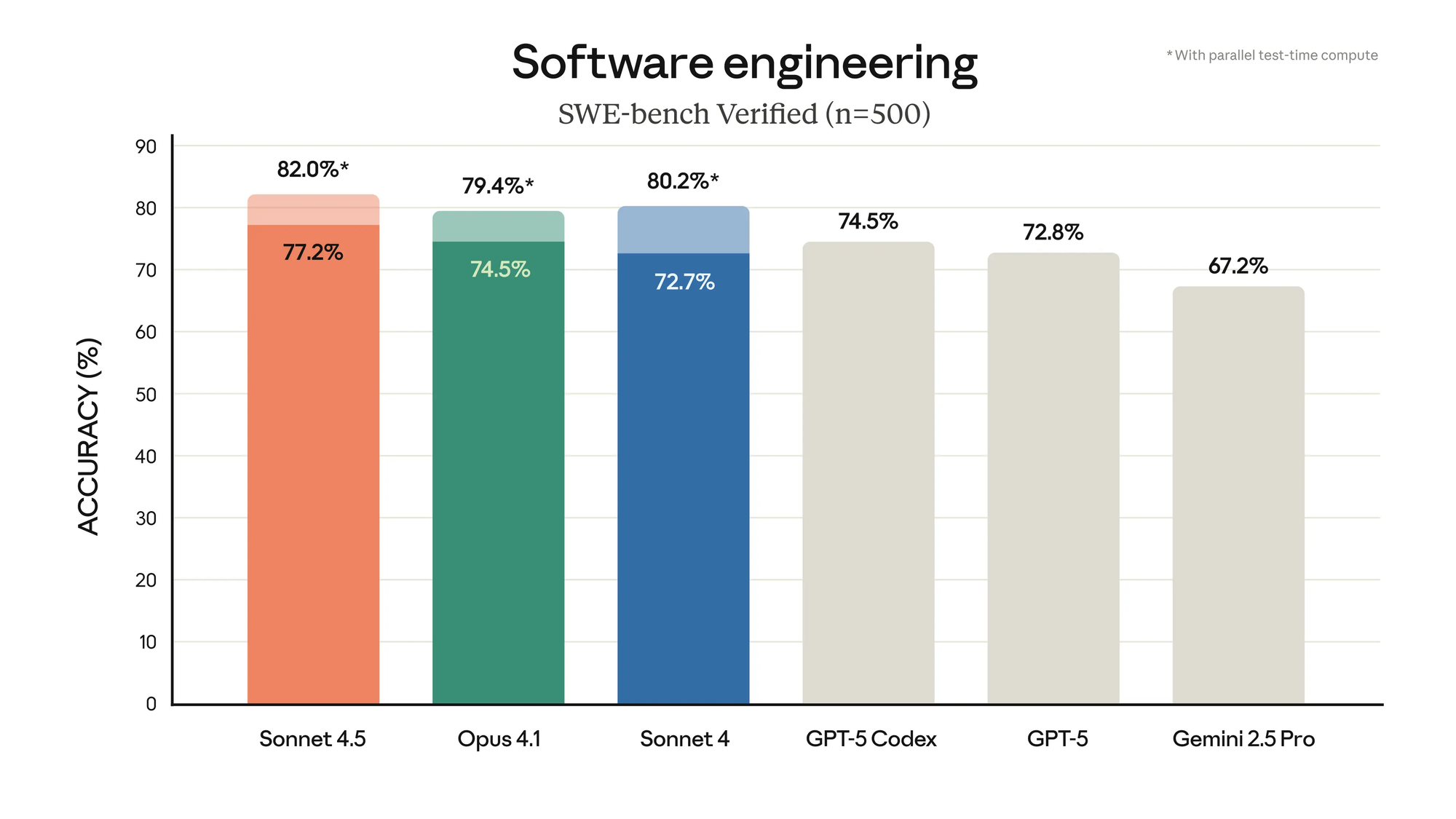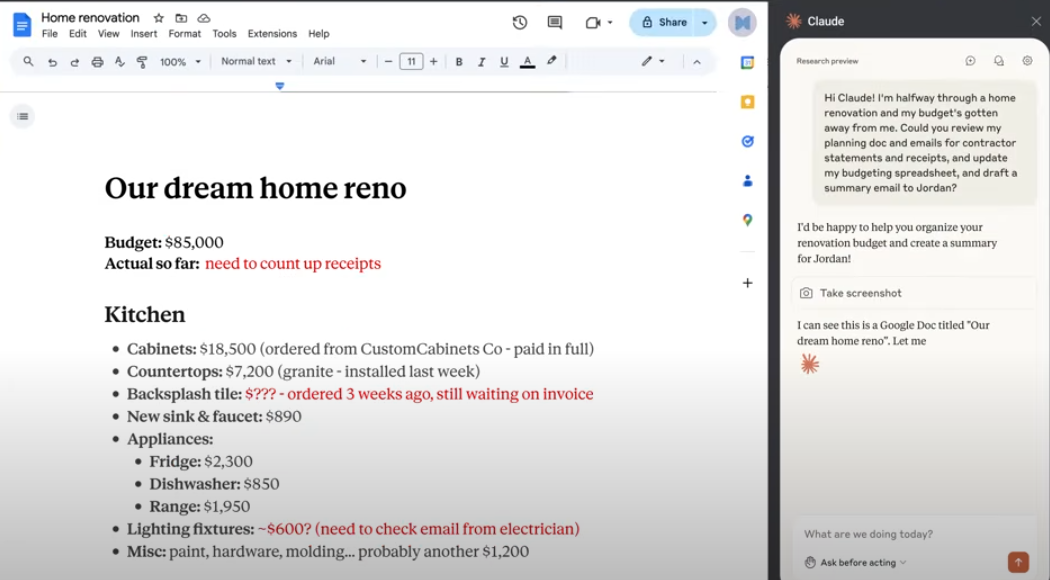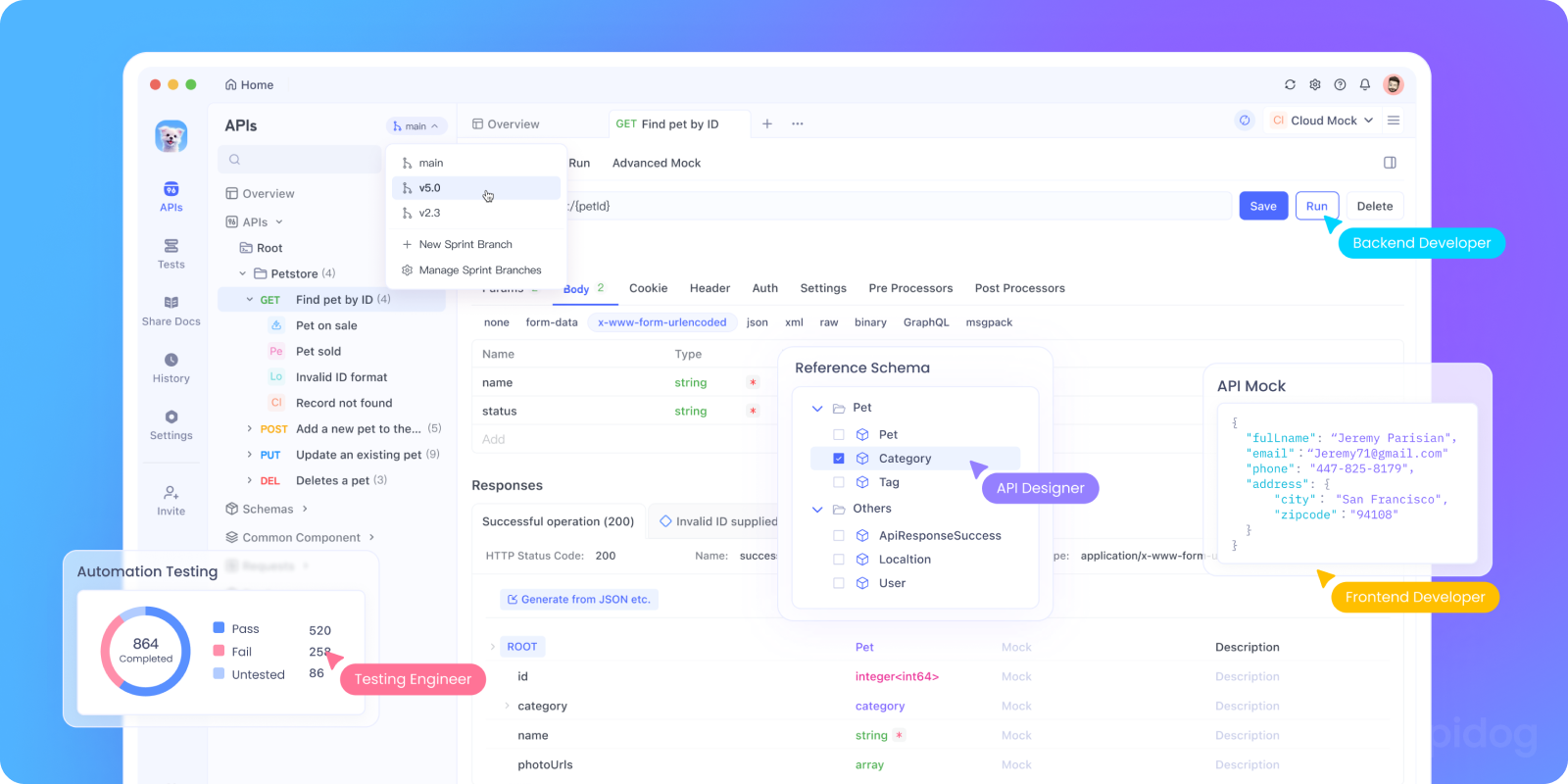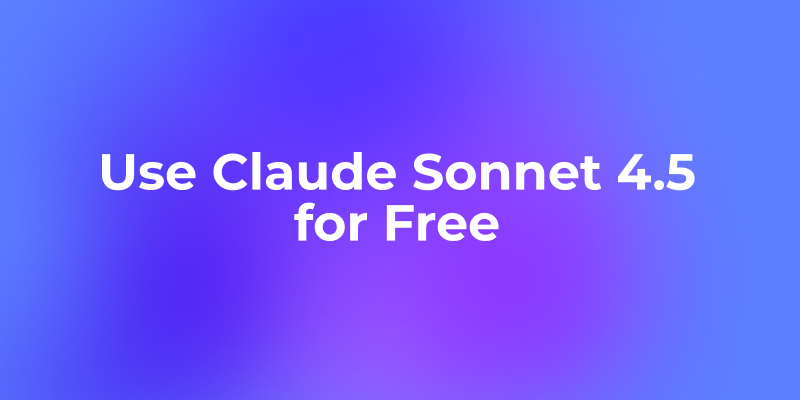In the rapidly evolving world of AI coding, Claude Sonnet 4.5 has emerged as a standout model for reasoning, computer use, and long-running tasks. Whether you're a casual user, a developer, or someone experimenting with AI agents, there are several practical ways to use Sonnet 4.5 without paying. In this guide, we'll walk you through three free methods to get started.
What Makes Claude Sonnet 4.5 Special

Claude Sonnet 4.5 raises the bar on real-world coding tasks. It leads on SWE-bench Verified and demonstrates strong performance on OSWorld, where models are tested on realistic computer interactions. In practice, that means fewer derailments during complex, multi-step work and better reasoning under pressure. For developers, the day-to-day value shows up as clearer diffs, steadier refactoring, more resilient test generation, and more reliable tool use (terminals, file edits, and scripted flows). If you've used earlier models and hit walls with long contexts or flaky tool use, Sonnet 4.5 is the next rung up the ladder.
Just as importantly, Sonnet 4.5 sits inside a growing ecosystem: enhanced IDE integrations, a more capable agent SDK, and app-level upgrades (code execution, file creation) that make it easier to keep momentum. When you combine that with a disciplined API workflow in Apidog—designing endpoints, validating responses, auto‑generating test cases, mocking APIs and publishing interactive docs—your AI output becomes a robust service consumers can actually use.
How to Use Claude Sonnet 4.5 for Free
In this section, we focus on practical, low-friction routes to use Claude Sonnet 4.5 for free, along with what to expect and how to get started. Each method has its own trade‑offs, so choose the one that fits your security, cost, and speed constraints.
Method 1: Try Claude Sonnet 4.5 Free on Claude.ai

The easiest way to access Claude Sonnet 4.5 is directly through Claude.ai.
- Available on web, iOS, and Android.
- Free to chat and explore everyday tasks like writing, brainstorming, or coding assistance.
- For developers, Sonnet 4.5 is also integrated into the Claude Developer Platform, Amazon Bedrock, and Google Cloud's Vertex AI.
- If you're tackling complex coding projects, you can also use Claude Code, their advanced coding agent powered by Sonnet 4.5.
While Claude.ai does offer paid tiers with higher limits, free users can still try Sonnet 4.5 directly without any setup.
Method 2: Use Claude Sonnet 4.5 for Free on Genspark

Another free option is through Genspark.ai.
- Claude Sonnet 4.5 is live and free for all users in AI Chat.
- Free-tier users can try it right away, while Plus users get unlimited usage.
- It's already integrated into Genspark's AI Developer tools and Super Agent platform.
If you want a free and powerful way to experiment with Claude Sonnet 4.5, Genspark is a great place to start.
Method 3: Use Puter.js to Access Claude Sonnet 4.5 without Server-side Keys
Puter.js enables calling advanced models from the browser without your own API keys or servers, under a "User Pays" pattern. The idea: you integrate the client library, and the end user covers usage. For individual developers this can feel "free to you", especially for prototypes and demos.
Quick start:
<script src="https://js.puter.com/v2/"></script>Turn Free Claude Power into Shipped APIs with Apidog

Free access is only useful if it moves your project forward. This is where Apidog shines. It brings structure and speed to the API lifecycle so your AI work becomes a reliable service. And the best news: Apidog is free to get started!
Below is a focused tour of the key capabilities of Apidog.
Design APIs
- Structured API modeling: Define endpoints, parameters, request/response bodies, schemas, and examples with a single source of truth.
- Security Schemes: Configure auth strategies (e.g., API Key, OAuth 2.0) centrally and apply across endpoints.
- Imports at scale: Bring in OpenAPI/Swagger; create a new module or attach to an existing one to keep structures clean.
- Branches and modules: Work in sprint branches with review controls; keep large projects tidy by module.
- Best practices & guidelines: Reference built‑in design guidelines and consistency tools to keep docs professional.
Send Requests & Debug Faster
- Request client: Compose and send requests with environment variables, credentials, and examples.
- Online debugging panel in docs: Clean parameter views by default; credentials are stored locally, shared across endpoints.
- Advanced SSE debugging: Merge message content and preview Markdown for AI/LLM streams in published docs.
- Status code hover: See inline explanations while debugging responses.
Mock API Data
- Mock servers: Instantly mock endpoints from your definitions for parallel frontend/backend work.
- Rich examples and rules: Use examples and mock rules to simulate realistic payloads.
Automated Testing
- AI‑generated test cases: From endpoint specs, generate positive, negative, boundary, and security cases (bulk generation supported).
- Test runs and reports: Export HTML reports with environment info for shareable context.
- Validation controls: Enable response validation per run, debug case, test case, or test step to reduce noise.
- Self‑hosted runner diagnostics: Clear error messages and suggested fixes when runners fail.
Publish API Documentation
- Docs sites: Publish clear, navigable documentation for internal or external consumers.
- Live debugging in docs: Try requests directly; OAuth 2.0 tokens can be generated in published docs (auth code flow) for faster authentication.
- Access controls: Visibility settings and team/org permissions to manage who can see and use docs.
Collaboration, Branches, and Governance
- Sprint branches & reviews: Assign branch admins for merge reviews and quality gates.
- Teams and organizations: Centralize resources; manage roles and inheritance of settings.
- Resources at scale: Convert folders to modules; organize endpoints and schemas for maintainability.
AI Features
- Modify schemas with AI: Side‑by‑side assistant adds field descriptions, mock rules, and fixes in context.
- Generate test cases with AI: Create comprehensive cases in bulk; configure provider/model, credentials, and requirements.
- AI naming: Propose standardized, professional field names with explanations and ratings.
- Endpoint compliance check: Audit docs against design guidelines with scored criteria and actionable suggestions.
- AI Providers: Support for OpenAI, Anthropic, Google (AI Studio/Vertex), or custom API format; configure at org/team level and set defaults.
Explore more about Apidog features at Apidog Help Center.
Bonus: Connect AI to Your API Specs with Apidog MCP Server
If you're coding in an AI IDE like Cursor or Claude, Apidog MCP Server lets the AI assistant read and use your API specifications directly. That means the agent can generate code from your API schemas, search documentation, and keep DTOs in sync—no copy‑paste marathons.
- Use Apidog project data, online docs, or standalone OpenAPI files as the data source
- Works with global MCP configurations; supports on‑prem settings and environment variables
- Ideal for agentic coding sessions driven by Claude Sonnet 4.5 or other models
Conclusion: Use Claude Sonnet 4.5 for Free—Ship with Confidence in Apidog
Free or near‑free access to Claude Sonnet 4.5 is a great accelerator—but the real advantage appears when you harness that power inside a disciplined API workflow. With Apidog, you can design clean API contracts, generate and validate tests with AI, and publish interactive docs that help developers succeed. The result is momentum that compounds: less friction, fewer regressions, and more dependable releases.
Indulge your curiosity with Sonnet 4.5's capabilities—and then channel the value straight into your API lifecycle. Create a free Apidog workspace, import your OpenAPI/Swagger, connect your AI provider, and experience how quickly ideas become reliable, well‑documented services.



